Have you ever deleted important files accidentally? We've all been there, shift + delete can sometimes be a nuisance, or deleting the recycle bin and then realizing that you needed one of the files. If you have a backup you may restore the files but if you don't, you are left with file recovery software or caches.
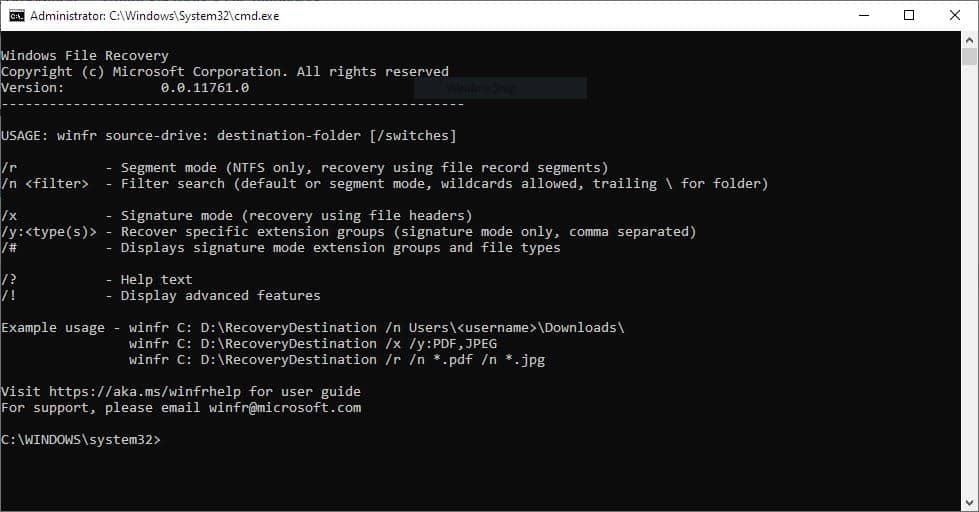
Microsoft has released a new tool called Windows File Recovery that addresses this problem.
This is a Windows 10 exclusive app, that you can download from the Microsoft Store. Install the app, and launch it. A command window should open, this is Windows File Recovery. It lists the commands that you can use.
The syntax is quite simple to learn. winfr source-drive: destination-folder [switches]
That's basically telling Windows File Recovery to look inside a directory, and recover the contents to a different folder of your choice, with your preferred settings. Switches are advanced options that help you narrow down the search.
There are five primary switches available in Windows File Recovery: /r, /n, /x, /y and /#
Including /r scans using Segment mode which is useful for NTFS file systems. /n helps filter the search If you're recovering files from a phone or camera's memory card, you may want to include /x which uses Signature mode. Want to recover specific file types? That's what the /y switch is for. # displays the file extensions in signature mode.
You can type the full path of the folders manually in CMD, or save some time by copying it from Explorer and pasting it in the command window. Windows File Recovery is compatible with NTFS, FAT, exFAT and ReFS file systems. It can be used to recover any file type (pictures, documents, videos, etc).
Time for a quick test
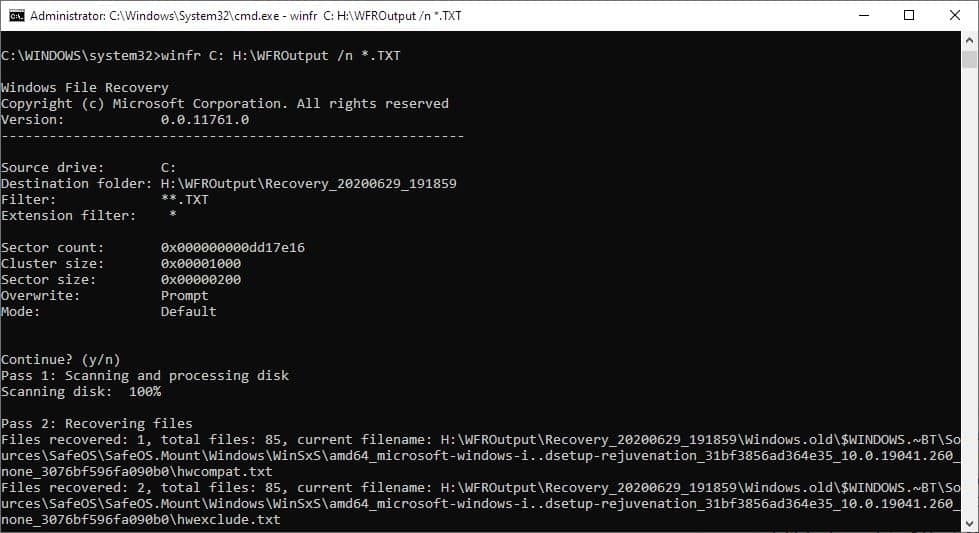
I created a new folder in C drive and placed backup copies of some documents inside it, and deleted the folder using Shift + delete. Let's see whether Windows File Recovery can help. I want to recover the files to a folder that I've created and named WFROutput. Since I only want to recover the text files from it, I use the /y switch with TXT as the file extension wildcard. So the command will look like this:
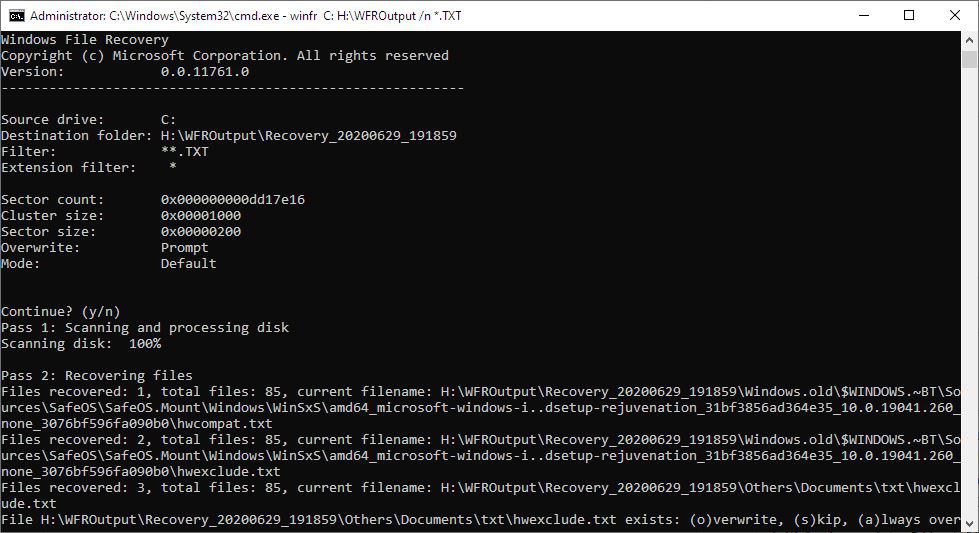
winfr C: H:\WFROutput /n *.TXT
The tool prompts you to continue. Choose y/n. Hit y and Windows File Recovery will begin scanning the disk. The scanning process is quite slow, though that depends on the drive's size and contents. The program then proceeds to recovering the files. While recovering the files, it asks you whether to overwrite an existing file, skip it, etc. When the process has been completed, hit y to view the recovered files in Explorer. The tool creates a recovery log file with the details about the saved files.
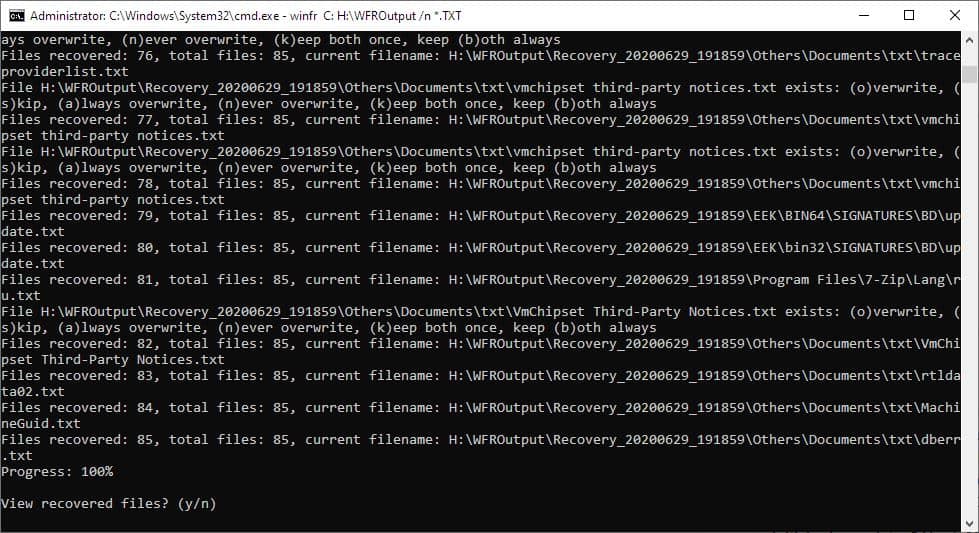
Unfortunately, the program did not recover the files I used in my test properly, and they ended up being corrupted.
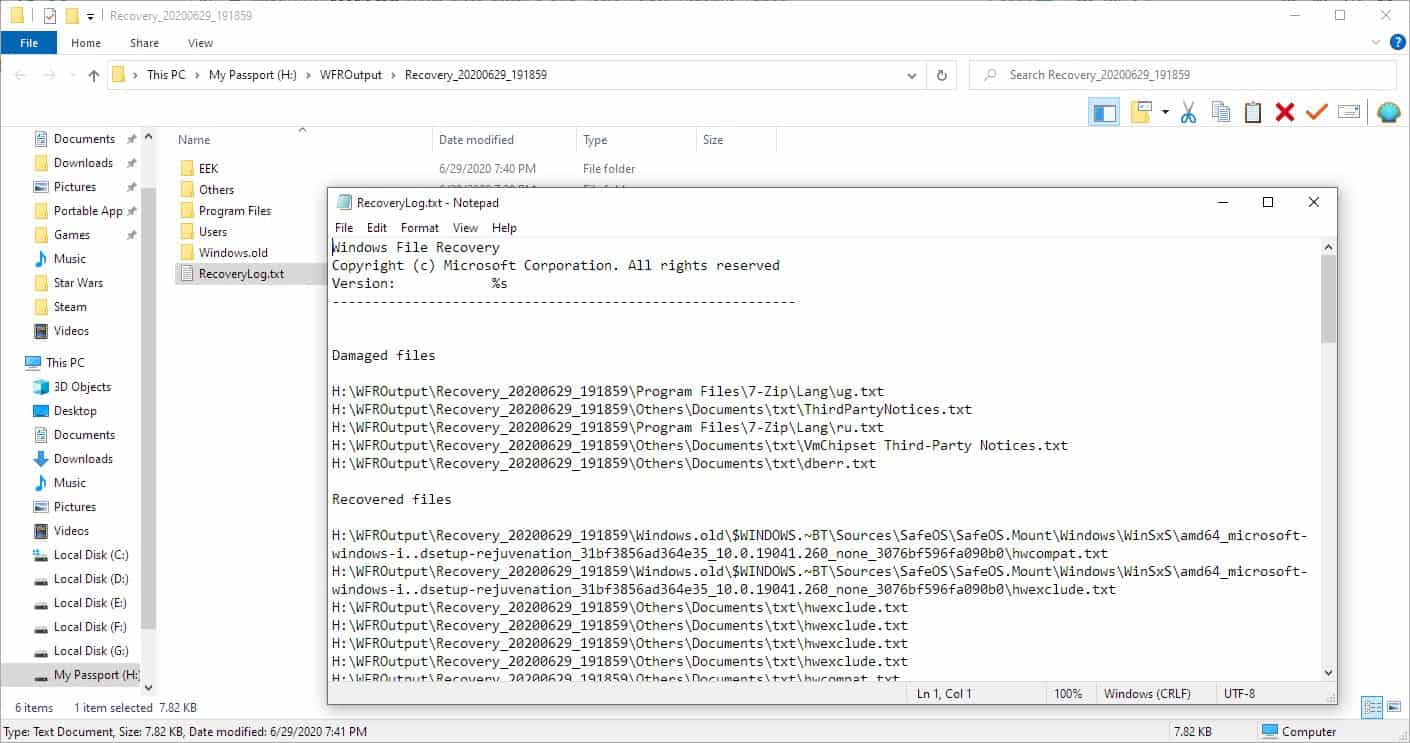
You may enter winfr /! to view a list of advanced options.
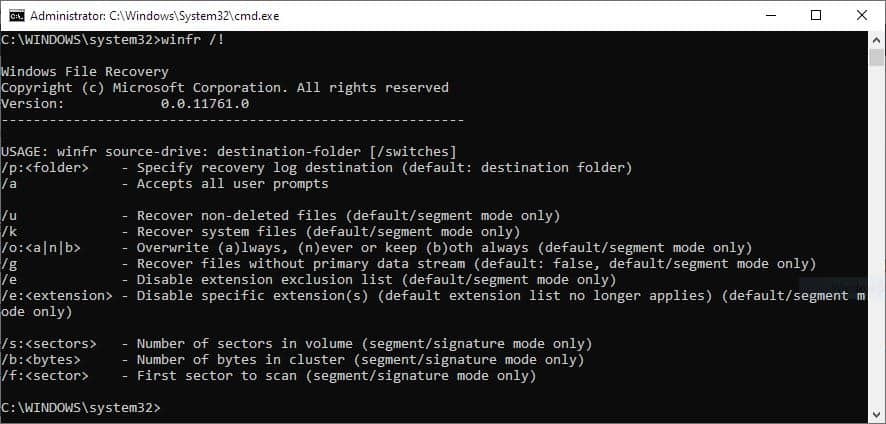
Microsoft claims that the tool can recover files even after the hard drive has been wiped. This of course depends on various factors, like when you deleted the files (seconds ago or a long time ago), did you save new files since the deletion or reboot the computer? If you deleted files on a HDD, it is advisable to recover them as soon as possible, without writing anymore data to it to prevent the lost files from being overwritten. Data on SSDs which have TRIM enabled could be overwritten sooner, than on those without.
Obviously, there are means to prevent the restoration of files. One of the best options is to encrypt part of or all of a drive, e.g. using VeraCrypt, before you format it and use it again for data or give it away. You may also use dedicated apps like DBAN or Eraser for that.
No recovery tool is flawless, and with the amount of paid recovery tools in the market, I think it's nice to have a free one. And when that's coming from Microsoft, that's a nice bonus.
The system requirements says that you'll need to be on Windows 10 version 19041.0 (Windows 10 2004) or higher to run Windows File Recovery.
Windows File Recovery can be a useful app, but Microsoft should have made it into a proper application with an interface, because command-Line tools aren't something the average Windows user may be familiar with. Not everyone likes a Windows Store app either, and both of these will limit the reach and popularity of the application.
Now You: Do you use file recovery software?
Thank you for being a Ghacks reader. The post Windows File Recovery app is a new app from Microsoft that can recover deleted files appeared first on gHacks Technology News.
from gHacks Technology News https://ift.tt/3g4S6ki


No comments:
Post a Comment